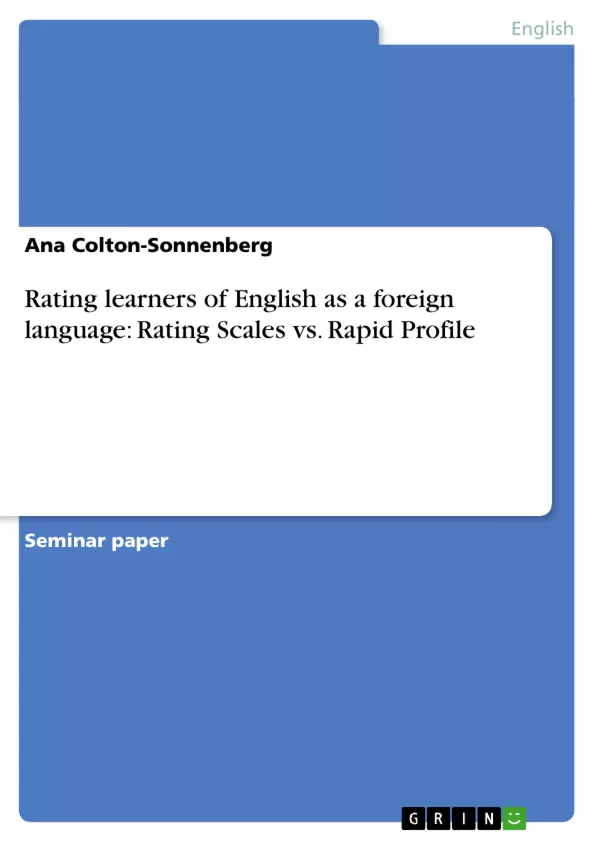Rating the learner is an important part of language teaching. Tests can be used to place students in courses according to their knowledge, to diagnose their strengths and weaknesses, to identify their proficiency etc. There are many theories about what tests should analyse and how they should be taken. Depending on the relevance of the results, the ratings need to be more or less accurate. Furthermore, they should have a beneficial backwash on teaching. It is thus at least as important to examine rating itself as it is to look at teaching methods.
As there are many different ways of rating language students, this work will concentrate on two specific approaches: rating scales and Rapid Profile. Whereas the first have been in use for a while, Rapid Profile is a newly developed computer programme which has not been discussed very much so far. It is thus particularly interesting to compare the two rating methods in order to investigate their advantages and disadvantages.
Inhaltsverzeichnis (Table of Contents)
- 1 Introduction
- 2 Language Testing: Requirements, Types and Properties
- 2.1. Test requirements
- 2.2. Types of tests
- 2.3. Test properties
- 3 Rating Scales
- 4 Rapid Profile
- 4.1. What is Rapid Profile?
- 4.2. The theory behind it
- 5 Rating Scales vs. Rapid Profile
- 6 Conclusion
Zielsetzung und Themenschwerpunkte (Objectives and Key Themes)
This paper aims to compare two methods for assessing second language acquisition: rating scales and Rapid Profile. It will explore the benefits and drawbacks of each approach, examining their theoretical foundations and practical applications in the context of language teaching. The paper focuses on the development and evolution of language testing, highlighting the importance of reliability and validity in test design and the impact of backwash on teaching practices.
- Language testing: requirements, types, and properties
- Rating scales and their application in language assessment
- Rapid Profile: a newly developed computer program for language assessment
- Comparison of rating scales and Rapid Profile in terms of advantages and disadvantages
- The impact of testing on teaching practices (backwash)
Zusammenfassung der Kapitel (Chapter Summaries)
The introduction highlights the significance of learner assessment in language teaching and introduces the two assessment methods under scrutiny: rating scales and Rapid Profile. Chapter 2 provides an overview of language testing, outlining essential requirements, types of tests, and crucial properties for accurate assessment. It discusses the concepts of reliability and validity, emphasizing the importance of both for effective language testing.
Chapter 3 delves into the concept of rating scales, describing their structure, function, and application in language assessment. It emphasizes the need for clear and concise level descriptors that accurately reflect different stages of proficiency. Finally, chapter 4 introduces Rapid Profile, a computer-based assessment program designed for rapid and efficient language assessment. This chapter explores the theory behind Rapid Profile, its strengths, and potential limitations.
Schlüsselwörter (Keywords)
Language assessment, second language acquisition, rating scales, Rapid Profile, reliability, validity, backwash, language testing, proficiency, achievement, diagnostic tests, placement tests, direct tests, indirect tests, discrete point tests, integrative tests, criterion-referenced tests, norm-referenced tests, objective tests, subjective tests, computer adaptive tests.
- Citar trabajo
- Ana Colton-Sonnenberg (Autor), 2006, Rating learners of English as a foreign language: Rating Scales vs. Rapid Profile , Múnich, GRIN Verlag, https://www.grin.com/document/71209



